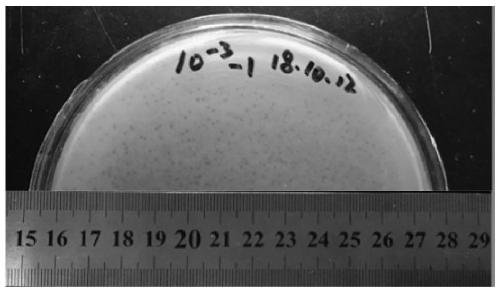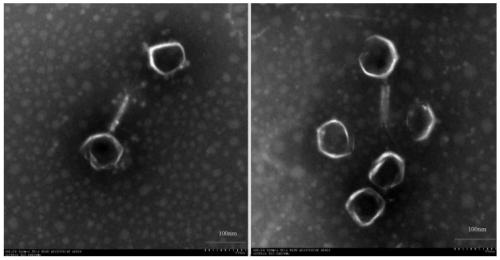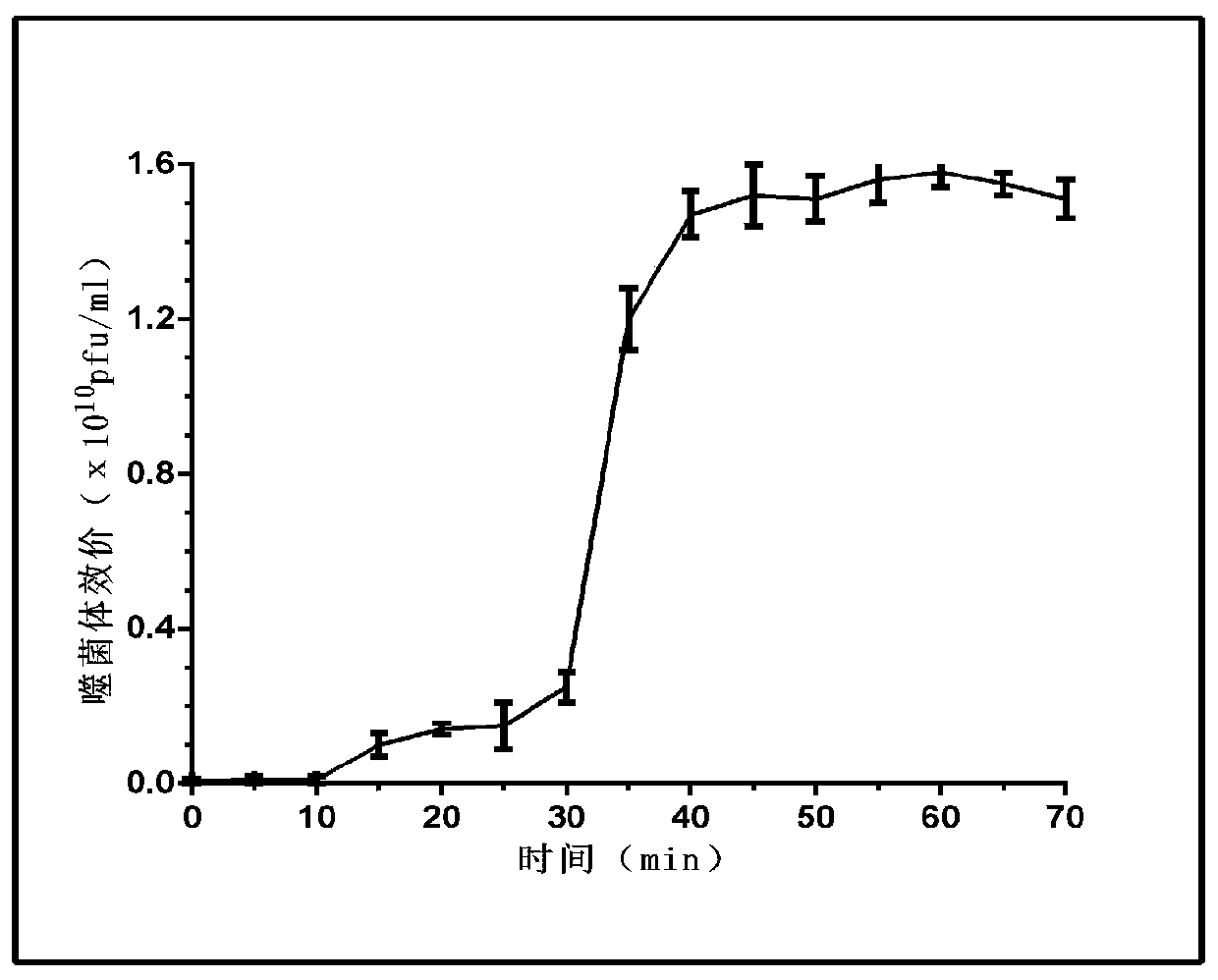Enterococcus faecalis phage and separation, purification, enrichment and application thereof
A technology of Enterococcus faecalis and bacteriophage, applied in the field of bioengineering, can solve problems such as alveolar bone defect, tooth loss, periapical abscess, etc.
- Summary
- Abstract
- Description
- Claims
- Application Information
AI Technical Summary
Problems solved by technology
Method used
Image
Examples
experiment example 1
[0034] Experimental example 1 Isolation and purification of Enterococcus faecalis phage
[0035] 1. Preparation of host bacteria: Enterococcus faecalis E.faecalis YN771 was used as the host bacteria for separating phages. This strain was preserved in the China Center for Type Culture Collection on April 19, 2019. Enterococcus YN771, streaked on BHI solid medium, incubated at 37°C for 24 hours, then picked a single colony and inoculated it in 5mL BHI liquid medium, cultured to early logarithmic growth OD 600 0.3, for the isolation of Enterococcus faecalis phage.
[0036] 2. Isolation of bacteriophages: from isolated cultures to early logarithmic growth OD 600 Enterococcus faecalis YN771 with a value of 0.3 was used as the host bacterium. The sewage without chlorine water treatment was retrieved from the sewage outlet of the Stomatology Department of Yan’an Hospital Affiliated to Kunming Medical University as a sample. The supernatant was suction filtered with a 0.45 μm steril...
experiment example 2
[0041] Experimental Example 2 Phage Morphology Observation
[0042] Take 25 μL of pure phage culture solution and add 50 μL of glutaraldehyde with a concentration of 0.5%. Take the mixed solution and drop it in the middle of a copper grid with a carbon film, let it rest for 30 minutes, absorb the excess liquid with absorbent paper, be careful not to break the copper grid, take 2% phosphotungstic acid was dropped on the copper grid, and the mixed solution was dyed for 2 minutes at room temperature, and then the excess dye solution was absorbed with absorbent paper, and the copper grid was dried at room temperature, and then observed by transmission electron microscope.
[0043] An important basis for phage classification is morphology. Because phages are simple in structure and small in size, their morphological structure can only be observed under an electron microscope after the pure culture particles of phages are negatively stained. The phage PEf771 isolated in the experimen...
experiment example 3
[0044] Experimental Example 3 Study on Biological Characteristics of Phage PEf771
[0045] 1. Infection temperature range and optimum growth temperature of bacteriophage PEf771
[0046] Take valence 10 10 100 μL of pfu / mL phage PEf771 pure culture solution and 300 μL of logarithmic growth phase Enterococcus faecalis YN771 suspension, mix well, let stand at 37°C for 10 minutes, take out and add 4mL BHI semi-solid culture at about 40°C and agar concentration of 0.75% After mixing, pour it evenly and quickly on the BHI solid medium, and place it upside down in constant temperature incubators at 4°C, 10°C, 15°C, 20°C, 25°C, 37°C, 42°C and 55°C respectively. ~3d, the formation of phage plaques was observed, and the experiment was repeated three times.
[0047] The infection temperature range of phage PEf771 is shown in Table 1. It can be seen that phage PEf771 can form transparent plaques with clear edges at 20°C to 42°C, but the activity is strongest at 37°C.
[0048] Table 1 P...
PUM
| Property | Measurement | Unit |
|---|---|---|
| diameter | aaaaa | aaaaa |
Abstract
Description
Claims
Application Information
 Login to View More
Login to View More - R&D
- Intellectual Property
- Life Sciences
- Materials
- Tech Scout
- Unparalleled Data Quality
- Higher Quality Content
- 60% Fewer Hallucinations
Browse by: Latest US Patents, China's latest patents, Technical Efficacy Thesaurus, Application Domain, Technology Topic, Popular Technical Reports.
© 2025 PatSnap. All rights reserved.Legal|Privacy policy|Modern Slavery Act Transparency Statement|Sitemap|About US| Contact US: help@patsnap.com



